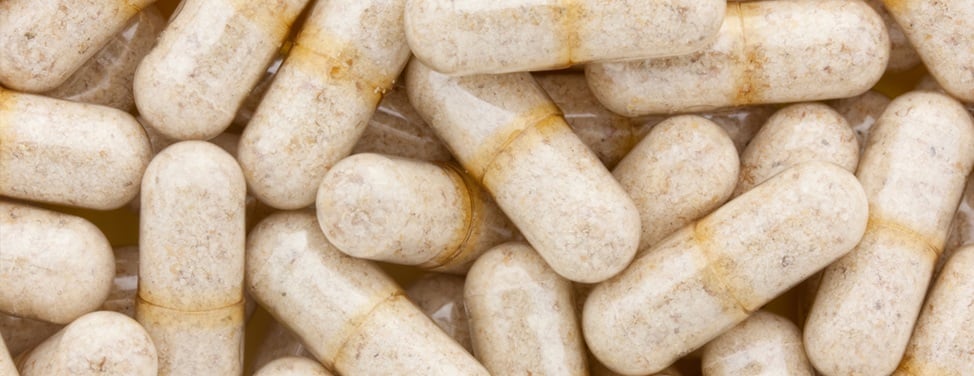
Increasing Fiber Intake
Why is fiber important?
A high-fiber diet appears to reduce the risk of developing various conditions, including heart disease, diabetes, diverticular disease, constipation and colon cancer. Fiber is important for the health of the digestive system and for lowering cholesterol.
What is fiber?
Dietary fiber is material from plant cells that cannot be broken down by enzymes in the human digestive tract. There are two important types of fiber: water-soluble and water insoluble. Each has different properties and characteristics.
- Soluble. Water-soluble fibers absorb water during digestion. They increase stool bulk and may decrease blood cholesterol levels. Soluble fiber can be found in fruits (such as apples, oranges and grapefruit), vegetables, legumes (such as dry beans, lentils and peas), barley, oats and oat bran.
- Insoluble. Water-insoluble fibers remain unchanged during digestion. They promote normal movement of intestinal contents. Insoluble fiber can be found in fruits with edible peel or seeds, vegetables, whole grain products (such as whole-wheat bread, pasta and crackers), bulgur wheat, stone ground corn meal, cereals, bran, rolled oats, buckwheat and brown rice.
How much fiber do I need each day?
The American Heart Association Eating Plan suggests eating a variety of food fiber sources. Total dietary fiber intake should be 25 to 30 grams a day from food, not supplements. Currently, dietary fiber intakes among adults in the United States average about 15 grams a day. That's about half the recommended amount.
How do I increase my fiber intake?
Here are some easy ways to increase fiber:
Grains and cereals
- As a general rule, include at least one serving of whole grain in every meal.
- Keep a jar of oat bran or wheat germ handy. Sprinkle over salad, soup, breakfast cereals and yogurt.
- Use whole-wheat flour when possible in your cooking and baking.
- Choose whole grain bread. Look on the label for breads with the highest amount of fiber per slice.
- Choose cereals with at least 5 grams of fiber per serving.
- Keep whole-wheat crackers on hand for an easy snack.
- Cook with brown rice instead of white rice. If the switch is hard to make, start by mixing them together.
Legumes and beans
- Add kidney beans, garbanzos or other bean varieties to your salads. Each 1/2 cup serving is approximately 7 to 8 grams of fiber.
- Substitute legumes for meat two to three times per week in chili and soups
- Experiment with international dishes (such as Indian or Middle Eastern) that use whole grains and legumes as part of the main meal or in salads.
Fruits and vegetables
- Eat at least five servings of fruits and vegetables each day. Fresh fruit is slightly higher in fiber than canned. Eat the peel whenever possible — it's easier than peeling or eating around it.
- Have fresh fruit for dessert.
- Eat whole fruits instead of drinking juices. Juices don't have fiber.
- Add chopped dried fruits to your cookies, muffins, pancakes or breads before baking. Dried fruits have a higher amount of fiber than the fresh versions. For example, 1 cup of grapes has 1 gram of fiber, but 1 cup of raisins has 7 grams. However, 1 cup of raisins or any other dried fruit has more calories than the fresh fruit variety.
- Add sliced banana, peach or other fruit to your cereal.
- Grate carrots on salads.
Fiber supplements
To find information on fiber supplements, please see Fiber Supplements.
How much fiber do I get from fruits and vegetables?
While all fruits have some fiber, there are some that are higher than others. Here are a few that have 3 to 4 grams of fiber:
- Apple
- Orange
- Tangerine
- Pear
- 1 cup blueberries
- 1 cup strawberries
Raspberries are high in fiber, as one cup has 8 grams.
Here are some vegetable choices that have 3 to 4 grams of fiber:
- 1/2 cup peas
- 1/2 cup cauliflower
- 1 cup carrots
- 1 medium sweet potato
- 1/2 cup squash
Why is soluble fiber so important?
Soluble fiber has been shown to reduce total blood cholesterol levels and may improve blood sugar levels in people with diabetes.
The best sources of soluble fiber are oats, dried beans and some fruits and vegetables. Although there is no dietary reference intake for insoluble or soluble fiber, many experts recommend a total dietary fiber intake of 25 to 30 grams per day with about one-fourth — 6 to 8 grams per day — coming from soluble fiber.
UCSF Health medical specialists have reviewed this information. It is for educational purposes only and is not intended to replace the advice of your doctor or other health care provider. We encourage you to discuss any questions or concerns you may have with your provider.










